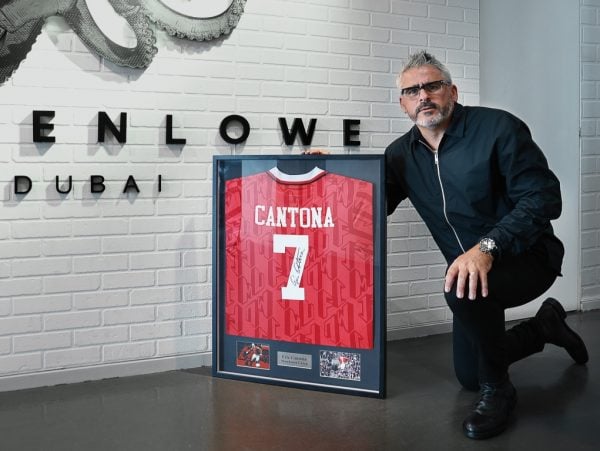
Eric Cantona in a Liverpool shirt? I don’t think so! As a proud Mancunian it would be cultural suicide to put this famous Frenchman in a Liverpool shirt.
Understanding culture is everything, and everything is culture. The UAE’s population is comprised of more than 85 per cent expatriates. Dubai is home to more than 180 different nationalities. As expected, this has made the UAE globally recognised as a colossal collage of different cultures.
I am privileged to work within the most dynamic and diverse cultures, with more than 38 nationalities working in one office. However, whilst there are common factors that bring us all together, working in this diverse and multicultural region I can’t help but get offended when someone tells me I will only ever understand 10 per cent of what Arab culture is and how it works in modern day life. Added to this I also hear from clients: “We need stronger, relevant Arabic creative.” Then my cultural creative conundrum goes into overdrive: Should I just throw in the towel now, or tackle the problem head on?
It’s a tough gig working creatively in this region; much of our work has to appeal to all shapes and sizes, to nationals from Emiratis and Egyptians to Saudis and Bahrainis.
But, due to the region becoming increasingly globalised, the very same work also has to appeal to Europeans, Americans, Africans and Asians. Do we then not owe it to ourselves and our clients to gain more knowledge and understand better the cultures within which we work?
In addition, how can we deliver regional cultural perfection when art and creativity have always been subjective? What some may consider a masterpiece, others may perceive as child’s play. It is not a cliché – beauty and cultural relevance are literally in the eye of the beholder. It is this subjectivity that makes it so hard to tackle such a demand as “I need more relevant Arabic.”
People within agencies, creative or otherwise, are generally inquisitive by nature; our job, after all, is to solve a problem and, when possible, to make a difference. So I reach out to all creatives and ask the following:
How much do you proactively understand the culture and region that we work in?
Give me 10 cultural nuances common to Saudi and UAE nationals.
Explain the difference between Lebanese, Syrian and Egyptian Arabic vocabulary.
How much do you understand about the changes in the region over the last 100 years and how they came to pass?
Reading and researching books helps. For example, The Poisoned Well – Empire and Its Legacy in the Middle East helped me understand that very last question. The persecution and aggression of the westernised states towards the Middle East over the last 200 years gives us the very answers to why this region is so emotionally driven.
So how does this manifest itself in our creative work and what can we learn?
I think every person can, and should, know as much as they can about another culture before they work within the environment, and it shouldn’t stop there. I am constantly surprised by the number of creatives who live here in the region for so many years and yet don’t know about the history and cultural differences of the country in which they live.
A survey, commissioned and carried out by YouGov, polled 1,056 expatriates and Emiratis on social integration. When asked if a knowledge of the country’s habits and traditions should be a prerequisite, 71 per cent agreed.
This was especially true among Emirati respondents, 71 per cent of whom agreed expatriates needed to know the country’s heritage and 84 per cent of whom agreed expatriates needed to know about the UAE’s customs and traditions.
I consider myself to be lucky. Firstly, I work with two of the most exceptionally talented executive creative directors that I have come across. One is born, bred and lives in Saudi Arabia and the other is Brazilian. The beauty of this is that creative culture crosses divides and brings exceptional work when it’s done right. The small cultural nuances don’t half make a difference, and when you get to understand them you can pass them on to your clients, showcasing a real knowledge, whether it be of the fashion, the language, or the food.
As an example, did you know that Emirati kanduras have no collars and matching embroidery on their sleeves? Interestingly, Saudi kanduras are very tight-fitted with a two-button collar and shirt sleeves that have cufflinks. To the naked Western eye it doesn’t matter a jot, but get it wrong and it’s a sacrilege beyond repair, a bit like Eric Cantona in a Liverpool shirt.
While some creatives are happy to immerse themselves in Middle Eastern culture, others tend to network largely with fellow countrymen and other Westerners, and this is really disappointing. Embracing a culture isn’t a Friday brunch.
As creative professionals, and as expatriates in this region, we have an obligation to gain a good knowledge of Arabic culture and Islamic influence. We should do our homework and understand the culture, Islam and what the region is all about, and keep on learning. Only then can we deliver relevant Arabic creative. It may not be spot on but it will go a long way to creating credibility for all in the work we produce.









